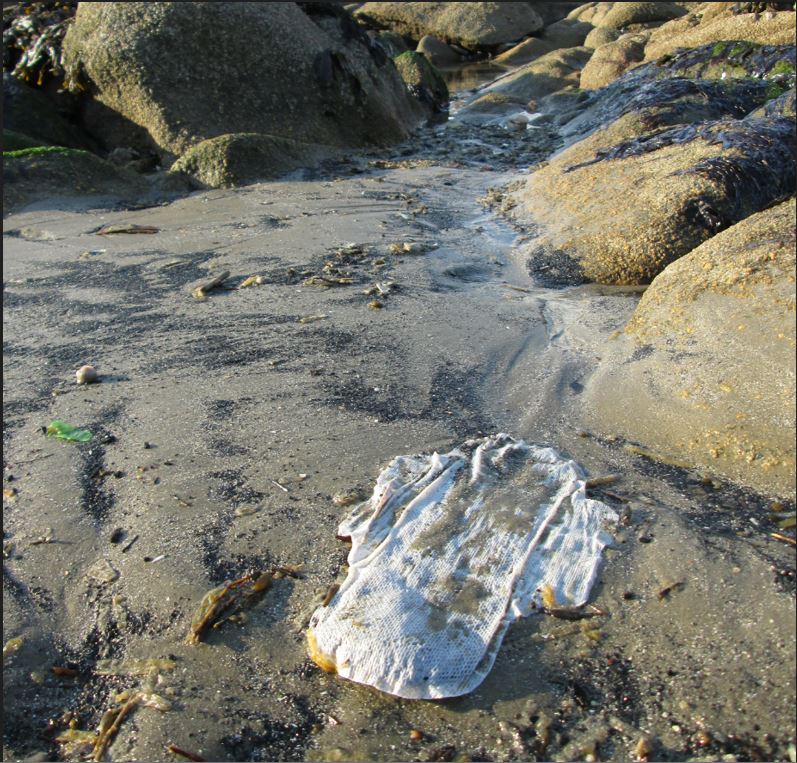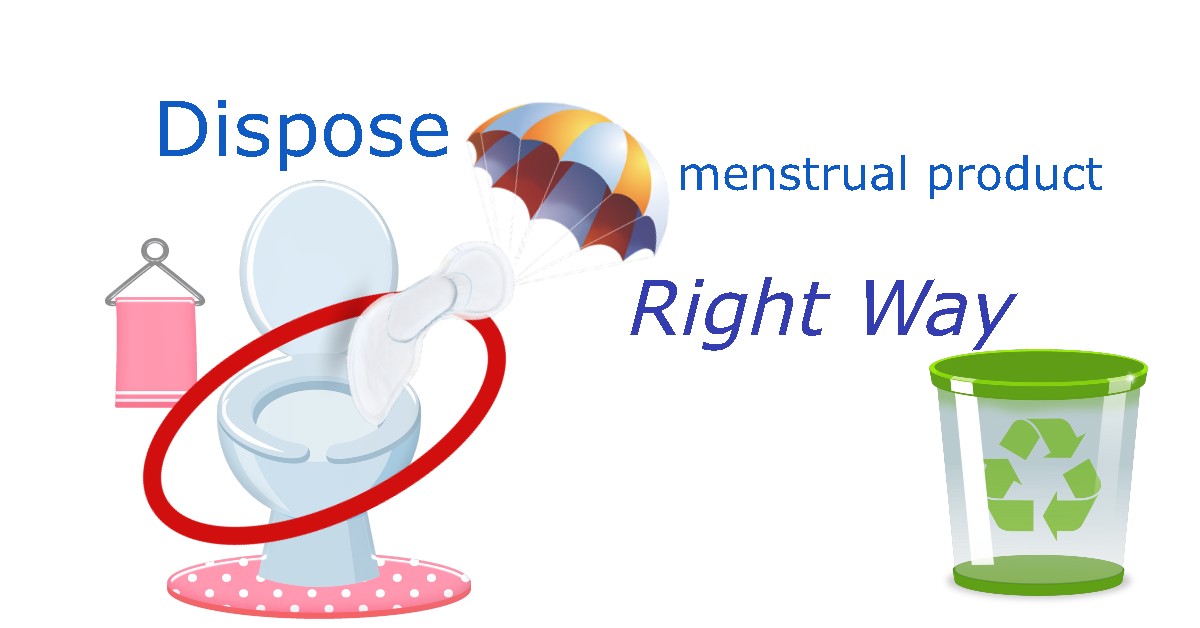Whenever you buy something these days, the thought has probably crossed your mind about where the containers go. Whether it is a water bottle or a disposable pad, it has to go somewhere eventually. Luckily there are recycling plants for things like plastic, paper, and glass. But what about sanitary products? More specifically, sanitary pads.
Can sanitary pads be composed and some of the Statistics
According to studies done by institutions such as Menstrual Health Alliance India, Global Citizen, Natracare, and YKA, approximately 12.3 billion sanitary pads are made every year in India alone. This does not take into account the total number of sanitary pads generated in other countries such as America, Europe, Australia or Africa.

Upon further studies it was found that mass-produced sanitary pads take approximately 500-800 years each to decompose because of the plastic components in most pads. Sanitary pads fall under the category of dry waste, although it should be categorised as biomedical waste since it cannot be disposed of with other routine waste.
The problem with this, however, is whereas biomedical waste is incinerated, the same cannot be done with sanitary pads. The incineration of pads also burn the plastic components within the sanitary pads, which releases toxic fumes that further harm the environment and ultimately our health. Since the most commonly available sanitary pads are made up of 90% plastic, this furthers the problem.
Another factor that comes into play is the higher cost of biodegradable sanitary pads, the misinformation and lack of knowledge about menstrual cups, and the stigma still clinging to menstruation which makes reusable pads an embarrassment for women and girls.
Sanitary pads waste measurement
Most of the available data is from studies conducted in India, therefore it makes for a good model to work on. If you take the size of the population, you can compare it to other countries, which will give you the rough estimates for each country. One of the horrifying statistics that has been found is that menstrual waste adds 113 thousand tonnes to India’s landfills each year. Let that sink in for a second. One hundred and thirteen thousand tonnes. Although about 88% of respondents to the study expressed their wishes to switch to less-polluting alternatives, they also commented that these alternatives were not easily available.
The standard sanitary pad contains the plastic equivalent of approximately four plastic bags, just to put that into perspective. Unlike plastic bags or plastic bottles, sanitary pads cannot be recycled due to the human waste component linked to sanitary pads. Furthermore the disposal of sanitary pads are done incorrectly. Where it should be disposed of in a human waste bin and kept separate for disposal, it is simply chucked in with the rest of the everyday waste, burned, or buried. All of these practices are toxic to nature as well as toxic to humans. There is also still a percentage of women and girls who flush sanitary pads and tampons down the toilet, which poses a whole new problem.
How culture is poisoning our planet
Due to many cultural beliefs, parental influence, economic status, and personal preferences, menstrual hygiene practices were heavily influenced. There are many misconceptions and toxic attitudes towards menstruating women and girls, which leads to the incorrect disposal of menstrual products, or the complete abstinence from using any menstrual products. This is affecting both our planet and the health and wellbeing of the female population.
Throughout the world there has been horrendous practices against menstruating women. From women facing restrictions during their period, to being forced to wash their menstrual products in secret at night to curb the misuse of these items in black magic, the barrage of misogynistic stigma against women and girls are still a large part of why sanitary products as a whole is frowned upon and expected to be kept secret.
Although the attitude towards menstruation has improved in developed countries, the false beliefs and traumatising practices are still rife in underdeveloped countries and rural areas. Only through education drives can this narrative change. Only through education can we ensure the safety and health of our women and girls, as well as make a positive change towards our planet.
5 best way to dispose sanitary pads or How do we tackle menstrual waste?
- The first step
would probably be to convince large companies to move away from the traditionally manufactured sanitary pad. The growing movement of switching to sustainable and eco-friendly products might just become large enough to convince these big companies to make the switch. What these big companies still fail to understand is that there is a big movement towards planetary health and personal health, of which they do not comply with either.
Another way to combat menstrual waste is to start leaning more and more towards sustainable hygiene products that are eco-friendly, such as reusable sanitary pads, bio-degradable sanitary pads and tampons, menstrual underwear, and the menstrual cup. The problem with some of these is that they are quite pricey, and the problem with the others are that they are not used correctly and thus threatens the health of those using it.
This is where education comes in, and where schools have an excellent window of opportunity to dispel many of the misconceptions and misinformation that is out in the world. Boys and men are grossly misinformed about what it means to menstruate, how it works, and how it is utterly beyond the control of girls and women. This leads to it still being a topic of ridicule and embarrassment, even in the most advanced countries across the world.
- The second step
would be to teach girls and women how to correctly dispose of their sanitary products, if they were to use disposable products. Sanitary pads, tampons, diapers, condoms, incontinence pants and incontinence sheets are just some of the products that fall under the category of dry municipal waste as per the Solid Waste Management Rules.
This places it in the difficult category of whether it should be seen as biomedical waste of plastic waste. But a big step already is to dispose of these items correctly. Sanitary pads should be placed in the bins provided in bathrooms, or in a separate bag at home that is properly sealed. This makes it much more hygienic for municipal workers when they are segregating waste, and much easier to separate the different types of waste.
Stop the “flash”
Then there is the task of convincing girls and women to not flush any sanitary products whatsoever down the toilet. Not only is this very likely to clog the toilet pipes, but if it does make its way to the waste farm, it makes for a very unhealthy working environment for waste pickers who have to fish these products out of the water before it can be processed. There are also French drains and latrines that do not use pipe systems, which means that the sanitary pads or tampons goes and lies at the bottom of the system, where it interferes with the natural system of these drains and leaves it clogged and having to be pumped more frequently.
I’ve made the switch. Why are biodegradable sanitary pads costly?
This is a complaint that many women and girls have. They decide to make the switch to bio-degradable sanitary pads, only to find that they are paying much more. So what could be the reason for this? It is actually quite a simple reason, although a sad and disturbing one at that. Because it is still seen as a niche product, the prices are inflated to make it seem more desirable. This is also true for people wishing to eat more organically. You simply pay more. Unfortunately companies do take advantage of this. But there has to be more to it than just that? One thing that came up during research is that it is slightly more expensive due to the high cost of producing bio-plastic.
Corporation lie
Another thing that came up during research is that many companies are selling their products under the ruse of being bio-friendly, but are ultimately just a ruse to make more money. If a company is not willing to disclose the components used in the making of the pad, then they are probably just after the money of selling a product that has become popular. A true bio-degradable sanitary pad would be able to be compostable at home. If not, then it is simply just going to yet another landfill.
In an independent study done on different sanitary pads, they observed the composting of the pads. They were surprised that some of the pads that were advertised as bio-degradable did not compost after nine months of testing. When one of these manufacturers were approached and asked about this, they simply stated that the term bio-degradable does not include a time stamp. It is therefore impertinent that you do your own homework before forking out extra money for a ‘green’ pad.
One thing to remember to look for is the wording. Is the sanitary pad bio-degradable or compostable? This truly does make a difference. Even if both go into a landfill, the one will break down in 90-180 days, while the other will simply clog up an already overloaded landfill.
In conclusion
The greenest way to think is by using reusable pads, period pants, or menstruation cups. If this is not an option due to a lack of clean running water or a place to dry your reusable pads or period pants in direct sunlight, then compostable sanitary pads would be the best option. But whatever you use, think of yourself first. Your health is determined by which product you use, so pick carefully. The market is slowly changing, so affordable and compostable sanitary pads may not be that far in the future.
